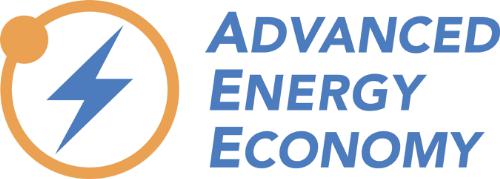
Not acting on climate change now could have a global price tag of $44 trillion, according to U.S. banking giant Citigroup. In a hefty report – “Energy Darwinism II, Why a Low Carbon Future Doesn’t Have to Cost the Earth” – Citigroup researchers provide a thorough economic analysis of the cost of moving to a world run on clean energy versus the status quo.
The report is a comparison of two scenarios running out to 2040, one of them “inaction” (i.e., maintaining the current energy system), the other “action” (i.e., using more of a low-carbon energy mix). And it’s also a sobering reminder of the high cost of maintaining business-as-usual energy generation.
The key takeaways:
Total investment in clean energy costs less than maintaining the status quo
The “action” scenario has a global energy price tag of $190.2 trillion while the “inaction” price tag is $192 trillion, meaning that total investment in transitioning to a lower carbon world is slightly less than the high carbon status quo. The cost difference of $1.8 trillion is for fuel costs, capital expenditures, and other cost calculations.
Climate change impacts on GDP could total $44 trillion
And yet the report’s real kicker is its analysis of how the negative effects of climate change (an expected 2.5 degrees of greenhouse gas-caused warming) will impact the gross domestic product (GDP). Citigroup used “integrated assessment models” and the cost of inaction on the GDP to come to a whopping $44 trillion price tag. This cost estimate does not include the cost of weather-related events and other catastrophic risk, nor does it attempt to quantify the environmental, health and social benefits of cutting fossil fuel use.
It’s also worth noting that this economic analysis is coming straight from financial investors, professionals who make cold, hard calculations, and do not have a vested interest in any environmental movement.
Want to make money on the energy transition? Invest now
Another important takeaway is that it’s smarter to invest more now in the clean energy transition than later. While the foremost benefit of transitioning to clean energy could be avoiding global environmental and/or public health devastation, for investors, the benefits are purely financial.
According to the Citigroup report, investments in clean energy technology and infrastructure provide returns between 1% and 4% in early years and between 3% and 10% in later years, suggesting you can make money on the energy transition by investing now and wisely. Since infrastructure for these technologies is not yet fully developed, emerging markets are the growth area.
How we can transition to clean energy
The authors of the Citigroup report also cover the question of shocks in energy commodities, a phenomenon whereby the price of one source of energy, such as oil could shoot up unexpectedly. They note that a more diverse energy mix could reduce the impact of these potentially economically devastating price shocks, making them less severe.
Based on their analysis, even a slight increase in energy costs early in the investment transition would result in a cumulative effect on global net GDP peaking at around 1 percent of current GDP – still lower than the projected average impact of climate change (0.9% to 2.5% of global GDP loss for a temperature increase of 2.5 degrees). In other words, over time, even a slight increase in energy costs as a percent of the GDP has less long-term impact than the projected climate change cost already projected.
The final section of the paper spells out ways to achieve the investment necessary for a clean energy transition going forward. The authors provide analysis on green bonds, “yieldcos”, covered bonds, and securitizations, while making note of the need to invest in research on “game-changing” discoveries.
In future Power points, I’ll provide a more detailed discussion of financial tools and innovation policy related to energy markets.
Economic Benefits and Market Innovation from Regulatory Reforms

With the recent regulatory rollout of the Clean Power Plan (the U.S. Environmental Protection Agency (EPA) plan for regulating CO2 emissions from the nation’s power plants), it’s important to note that rhetoric from all sides of the debate rarely provides much of a historical perspective on market responses to prior large-scale government regulatory reforms.
Fortunately, the Advanced Energy Economy Institute (AEE) recently issued a succinct report, Markets Drive Innovation, that looks at how private markets and industry innovation previously created economic benefits in reaction to three prior EPA sets of regulation: combatting acid rain, reducing lead in gasoline, and controlling the impact of nitrogen emissions on the ozone layer. The report details how private market innovation quickly and cost effectively achieved policy goals for these three sets of regulation.
The AEE authors also provide citations for other detailed studies that examine market solutions to these three prior regulatory reform efforts. In all, the report provides a strong foundation for assessing the Clean Power Plan and its many compliance steps. The report authors also provide a list of 32 potential solutions for lowering carbon emissions on the technology options available to states.
While any kind of regulator compliance comes with short-term costs, the AEE study serves as a good reminder that regulatory challenges can also be opportunities, i.e. market innovation can often emerge when regulation confronts the energy sector. Public policy steps produce winners and losers, with trade-offs always in the mix, and the Clean Power Plan is no exception. This well-written and well-documented 31-page report should serve as a primer for the public and policymakers, all of whom are trying to sort out the wheat from the chaff in the muddy media coverage of the Clean Power Plan.
Health Benefits of Renewable Energy and Energy Efficiency Measures

A group of Harvard University researchers recently published a study inNature Climate Change providing stronger methods for monetizing the health benefits that come from clean energy measures.
This project was designed specifically to look at regional variations in the benefits of energy efficiency and renewable energy, and looked at six different locations and used a total of 24 simulated scenarios.
What is significant about their results – which specifically validate the importance of site-specific information in estimating public health benefits – is that a region can save between $5.7 million annually and $210 million annually in health benefits by implementing more energy efficiency and renewable energy measures. These measures displace emissions from greenhouse gases and have important public health co-benefits from displacing sulfur dioxide and nitric oxide and dioxide emissions.
This research provides the public and policymakers with real data – data that takes into account regional health cost savings from cleaner air – for use in comparing the costs of fossil fuel energy compared to transitioning to renewable energy.
The research summary is available here, but this news article serves as a great introduction to the study.

